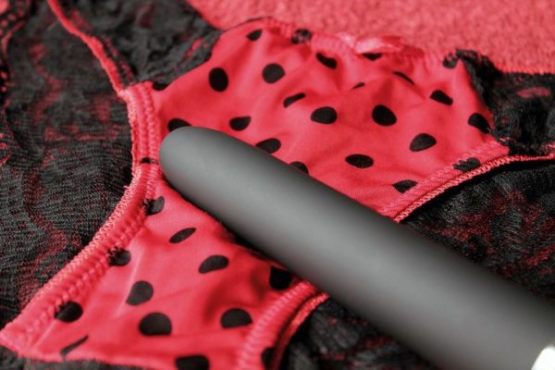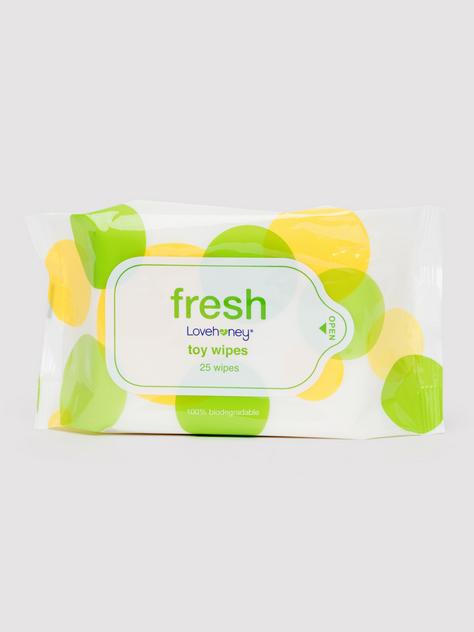
Whether it’s your first foray into the exciting world of adult toys or you’re a seasoned enthusiast, one aspect of owning these pleasure accessories that often goes underappreciated is their aftercare. We’re talking about the necessary, albeit less glamorous, task of cleaning your sex toys. The thrill of a new vibrator, the allure of a sleek silicone dildo, the anticipation of introducing an innovative BDSM tool into your repertoire – these can all eclipse the sobering reality that, like any other personal use item, sex toys require regular cleaning and maintenance.
Why, you might ask?
Well, first off, it’s a matter of health and hygiene. Properly cleaned sex toys not only ensure your intimate encounters remain enjoyable but also safeguard you from potential infections caused by bacterial build-up. Given the intimate nature of these items, cleanliness is of utmost importance. Leaving your toys unattended after use is similar to leaving your dinnerware unwashed – it’s an open invitation to bacteria and germs that you certainly wouldn’t want anywhere near your body.
Secondly, regular cleaning enhances the durability of your beloved toys. When you invest in a quality sex toy, you’re not just buying a product; you’re investing in your sexual wellness and happiness. So, it only makes sense to take care of your investment, ensuring it lasts long and continues to serve its purpose efficiently.
Despite these compelling reasons, the topic of how to clean your sex toys properly remains less discussed. This could be due to a lack of understanding or the overwhelming diversity in materials and types of toys available in the market. What’s suitable for a glass dildo might not work for a latex one. A BDSM leather accessory might require different care than a battery-powered love egg. Consequently, the cleaning routine can get perplexing for many users.
That’s where we come in. This comprehensive guide is aimed at dispelling your doubts, answering your questions, and walking you through the best practices for cleaning and maintaining your sex toys. From identifying the material of your toy to specific cleaning methods, safe usage tips, and storage hacks – we have you covered. We’re here to ensure that your playtime remains safe, hygienic, and thrilling, and your toys remain in pristine condition for years to come.
So let’s embark on this journey of sex toy maintenance, which is just as important as the journey of sexual exploration itself. After all, the key to unlocking the utmost pleasure lies in a clean and well-cared-for toy collection. And remember, a clean toy is a happy toy – and its owner even happier!
Contents
Understanding Why Cleaning Is Crucial
Your intimate wellness should always be a priority, and when it comes to sex toys, keeping them clean is non-negotiable. The reasons why cleaning your sex toys is crucial might seem obvious, but let’s delve a little deeper to appreciate their true significance.
Preventing Infections
This is the most significant reason for proper cleaning. Sex toys, by nature, come into contact with body fluids and sensitive areas of your body. In these circumstances, they can quickly become a breeding ground for bacteria, mold, yeast, and even STIs if shared without proper cleaning. Inadequate cleaning or storing your toys incorrectly can lead to bacterial growth, which may result in yeast infections, bacterial vaginosis, or even more severe health concerns.
Maintaining Product Quality
The longevity and performance of your sex toys depend on how well you take care of them. Some materials can degrade over time if not cleaned and stored properly. For instance, silicone toys can become sticky, while porous materials can harbor bacteria that can’t be removed, leading to potential health issues. Therefore, cleaning your sex toys is not just about immediate use; it’s about preserving their quality and ensuring they’re safe to use in the long run.
Avoiding Unwanted Odors
Let’s face it, unclean sex toys can develop an unpleasant odor over time due to the accumulation of body fluids. This can be quite off-putting and could even distract you from the pleasure you’re supposed to be experiencing. Regular cleaning helps avoid this issue, keeping your toys fresh and ready for action.
Improving User Experience
A clean sex toy is not just healthier; it’s more enjoyable to use. Knowing that your toys are clean and safe will provide peace of mind, enhancing your overall sexual experience. The last thing you want during your intimate moments is worrying about whether your toys are clean.
In a nutshell, the importance of cleaning your sex toys can’t be stressed enough. It’s a practice that ensures your safety, enhances your sexual experience, and prolongs the life of your toys. Remember, a clean toy is not just a happy toy; it’s a ticket to safe and worry-free pleasure. So now that we understand why cleaning is crucial let’s move on to how we can correctly identify and clean different types of sex toys.
Identifying the Material of Your Toy
Understanding what material your sex toy is made of is essential as it significantly influences how it should be cleaned. Different materials require different cleaning and maintenance methods. Some materials are porous, meaning they have tiny holes that can harbor bacteria, while others are nonporous and thus easier to clean thoroughly. Let’s break down the most common sex toy materials:
- Silicone: This is a popular choice for many sex toys due to its body-safe and nonporous nature. It’s soft, flexible, and durable. To identify a silicone toy, check the product details from your retailer or look for words like ‘silicone’ or ‘medical grade silicone’ on the product packaging.
- Glass: Glass toys are nonporous, hard, and smooth. They’re often transparent or semi-transparent and have a hefty weight to them, which can help you distinguish them from other materials.
- Stainless Steel: These toys are also nonporous, hard, and smooth, but they are heavier and cooler to touch than glass or silicone toys. The metallic shine is a clear giveaway of a stainless steel toy.
- Hard Plastic: These toys are relatively light and nonporous. They are harder and less flexible than silicone toys, and unlike glass or metal, they don’t have any heft to them.
- Latex and Rubber: These materials are porous and flexible. They can often be identified by a rubbery smell and a softer, more flexible feel than silicone.
- Realistic Materials: Some sex toys are made of materials that are designed to mimic the feel of real skin (e.g., Cyberskin, UR3, Fanta Flesh, etc.). These materials are incredibly soft and porous. They often need specific care instructions, which should be included with the product.
- Jelly Rubber: This is a soft, often clear or translucent, and very flexible material. It is porous and may contain harmful phthalates, so it’s generally recommended to use a condom with these toys.
Remember, the type of material will determine the cleaning method. Some materials can handle boiling water or a run in the dishwasher, while others need mild soap and warm water. Some toys may need specific cleaning solutions. Therefore, recognizing the material of your toy is the first step to ensuring it gets the care it needs. Armed with this knowledge, we can now explore how to clean these various materials in the next section.
Cleaning Different Types of Toys
Now that we’ve identified the different materials, it’s time to dive into how to clean each one. The key here is gentle care – you want to be sure your toys are clean without damaging them. Here are the general cleaning guidelines for each type:
- Silicone: Silicone toys are among the easiest to clean due to their nonporous nature. Use warm water and a mild, unscented hand or dish soap. For a deep clean, silicone can be boiled for about 10 minutes or placed on the top rack of a dishwasher without detergent. Be sure that your toy is 100% silicone and doesn’t have any electronic components before using these methods.
- Glass: Like silicone, glass is nonporous and straightforward to clean. Warm soapy water will do the job perfectly. Glass can also be boiled or placed in the dishwasher for a more thorough cleaning.
- Stainless Steel: Stainless steel toys can be cleaned with warm soapy water. They can also be boiled for 10 minutes or put through a dishwasher cycle for a deeper clean. Always dry steel toys thoroughly as they can rust if left damp.
- Hard Plastic: Clean these toys with warm soapy water. Do not boil or put them in the dishwasher, as the high heat can warp the plastic.
- Latex and Rubber: As porous materials, these toys require more careful cleaning. Use warm water and a mild soap, and make sure to rinse them thoroughly. They should also be dried completely before storage to prevent bacterial growth.
- Realistic Materials: Due to their highly porous nature, these materials need special care. Use warm soapy water for cleaning and then dust with renewer powder (often cornstarch) to maintain their texture. Follow the manufacturer’s cleaning instructions closely, as some may require specific cleaning products.
- Jelly Rubber: Clean with warm soapy water and dry thoroughly. Due to the porous nature and potential for harmful chemicals, it’s recommended to use a condom with these toys.
Remember, no matter what type of material your toy is made of, you should always rinse off any soap residue thoroughly to prevent irritation during the next use. Also, always check the manufacturer’s cleaning instructions, if available, as some may have specific cleaning recommendations or products to avoid.
Armed with these general cleaning guidelines, you can ensure your toys are clean, safe, and ready for their next adventure. Up next, we’ll cover how to take care of your electric or battery-operated toys, which need a little extra care compared to their non-electric counterparts.
Caring for Battery-Powered or Electric Toys:
Electric or battery-operated toys add a stimulating dimension to your pleasure, but they also come with their unique set of care instructions. Given the electrical components, these toys can’t be cleaned the same way as non-electric ones. Here are the key steps for maintaining your powered companions:
- Unplug and Remove Batteries: Before cleaning any battery-operated or rechargeable toy, always remove the batteries or unplug the toy if it’s a plug-in device. This prevents any potential for electric shock or damage to the battery compartment.
- Check for Water Resistance: Not all electric or battery-operated toys are water-resistant, and very few are fully waterproof. Always check the packaging or manufacturer’s instructions to find out if your toy has any water resistance. If the toy is labeled as splashproof, it can handle a quick wipe with a damp cloth. If it’s fully waterproof, you can immerse it in water for a more thorough cleaning.
- Cleaning Non-Waterproof Toys: If your electric toy isn’t waterproof, avoid submerging it in water. Instead, use a damp cloth or sex toy wipe to gently clean the surface, ensuring you get into any ridges or crevices. For hard-to-reach places, a cotton swab can be useful.
- Cleaning Waterproof Toys: For waterproof battery-operated or rechargeable toys, you can use warm water and mild soap to wash the surface. Rinse thoroughly to ensure no soap residue remains, as this could cause irritation during the next use.
- Drying: Regardless of the type of toy, make sure to dry them thoroughly before reinserting batteries or plugging them back in. Any moisture in the battery compartment or charging port can damage the toy. You can pat them dry with a clean, lint-free cloth or let them air dry.
- Storage: Once your toy is clean and completely dry, store it in a cool, dry place. Avoid places with excessive heat or humidity, as these conditions can damage the electronic components. If your toy came with a storage bag, use it to prevent dust accumulation.
Battery-powered and electric toys bring so much fun to our lives, but they also require careful handling. By following these steps, you can ensure they serve you well for a long time. Up next, we’ll cover cleaning BDSM tools, which often involve a mix of materials and therefore, a mix of cleaning techniques.
How to Clean BDSM Tools
BDSM tools, while exciting and versatile in their uses, pose a unique challenge when it comes to cleaning due to the variety of materials involved. Leather, metal, silicone, and wood may all feature in your BDSM kit, and each requires different care. Here’s how you can keep your kit hygienically clean:
- Leather Items (Whips, Harnesses, Collars, etc.): Leather is a porous material that can absorb body fluids and sweat. Clean leather items with a damp cloth and mild soap, but avoid soaking them as this can dry out and damage the material. There are also specific leather cleaners available that will both clean and condition the leather to keep it supple. After cleaning, allow the items to air dry completely.
- Metal Items (Cuffs, Hooks, etc.): Metal items can be cleaned much like stainless steel sex toys. Use warm soapy water for a thorough clean. If the items are made from stainless steel, they can also be boiled for a more thorough sterilization. Dry metal items thoroughly after cleaning, especially if they’re not made of stainless steel, to prevent rusting.
- Silicone Items (Gags, Plugs, etc.): Clean these as you would any silicone sex toy, with warm soapy water, or by boiling for a few minutes for a deeper clean. Make sure they’re 100% silicone and contain no electric components before boiling.
- Wooden Items (Paddles, etc.): Cleaning wooden items can be tricky due to the porous nature of the wood. Wipe them with a damp cloth and mild soap, but avoid soaking. Dry immediately after cleaning. Some wooden items may also be sealed with body-safe varnish, allowing for a more thorough clean.
- Rope: If your rope is cotton or nylon, it can be washed in a lingerie bag on a gentle cycle in the washing machine and then air-dried. If it’s made of natural fibers like hemp or jute, hand-wash it with a gentle soap and warm water, then allow it to air dry.
- General Tips: As with other sex toys, always check for manufacturer’s cleaning instructions, as they may vary based on the specifics of the product. Additionally, it’s a good idea to store your BDSM tools in a cool, dry place, preferably in individual storage bags to keep them clean and dust-free.
Just like with traditional sex toys, maintaining your BDSM tools is crucial for your safety and health. Plus, well-cared-for tools will not only last longer but also provide a better experience during play.
Tips for Safe Use and Maintenance:
After addressing the specifics of cleaning your sex toys and BDSM tools, it’s essential to understand the overall measures for safe use and maintenance. Here are some useful tips:
- Use the Right Lube: Always use a lubricant that’s safe for your toy’s material. For example, silicone-based lubes can damage silicone toys, while oil-based lubes can degrade latex toys. Water-based lubes are generally safe for all toys.
- Inspect Your Toys Regularly: Before and after each use, inspect your toys for any signs of wear and tear, such as rips, tears, or changes in color. Damaged toys can harbor bacteria and may need to be replaced.
- Don’t Share Without Protection: If you plan to share your toys with a partner, use a new condom each time the toy changes hands to prevent the spread of STIs. This is especially crucial for porous toys.
- Store Toys Properly: Store your toys in a cool, dry place. Avoid storing toys together in a heap as they can damage each other over time, especially if they’re made from different materials. Many toys come with storage bags for this purpose.
- Regular Cleaning: Clean your toys before and after each use to ensure they’re safe. Even if a toy hasn’t been used, clean it anyway as it might have collected dust.
- Read the Instructions: This may sound basic, but many people overlook it. The manufacturer’s instructions can provide essential guidance on cleaning, storage, and even usage.
- Use As Intended: Using your toys in ways they were not designed for can lead to damage to the toy or injury to you. Ensure you’re using each toy as the manufacturer intended.
Incorporating these tips into your routine will keep your toys in top shape, ensuring they last longer and continue to provide you with safe pleasure. With this information, you’re now fully equipped to enjoy your toys while maintaining the best possible intimate health.
Final Thoughts
Navigating through the comprehensive world of sex toy maintenance and hygiene, it’s clear that maintaining your intimate tools not only extends their life but also assures that your exhilarating moments are safe and secure.
However, remember that all the care and maintenance cannot uplift a subpar toy. Quality should always be at the forefront of your decisions in this arena, and that’s precisely what we guide you towards. Our website provides you with in-depth and unbiased reviews of the finest sex toys in the market. We recognize that pleasure is a personal journey, hence our vast range of reviewed products.
We have partnered with the leading brands in the industry to provide you the best options available. Whilst we don’t sell these products; instead, our job is to steer you in the right direction based on our extensive knowledge and reviews.
So, why wait? Explore and enrich your pleasure journey by perusing our recommendations. We are here to ensure that your exploration never runs out of exceptional options. Here’s to your discovery of intensified pleasures. Happy exploring!


